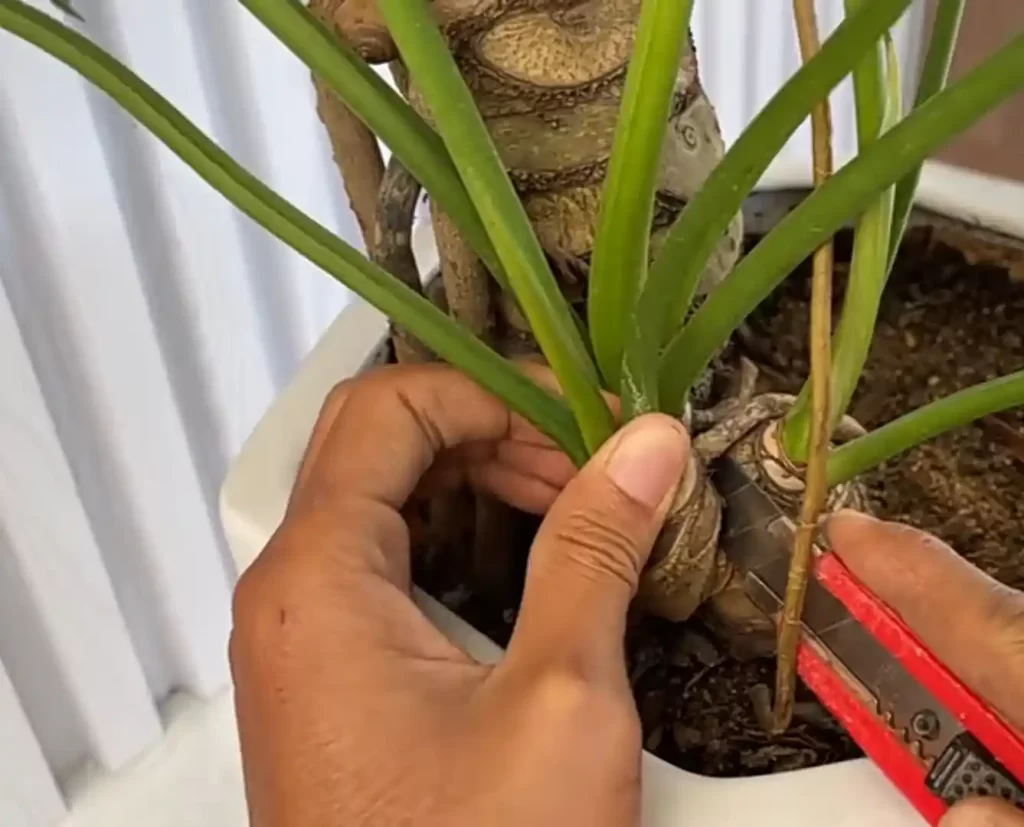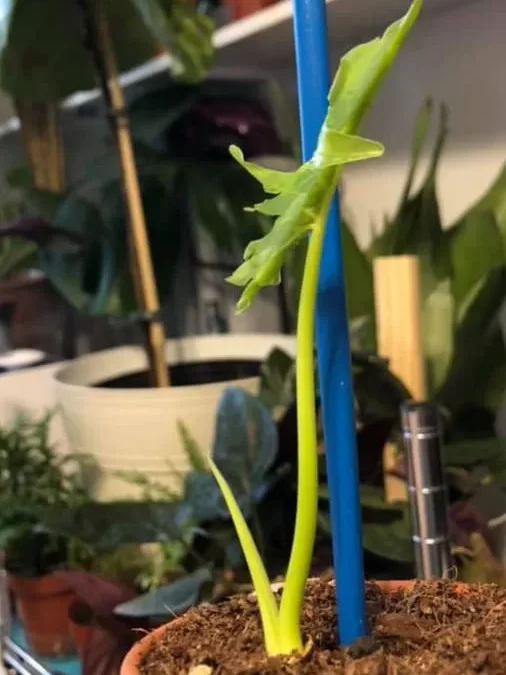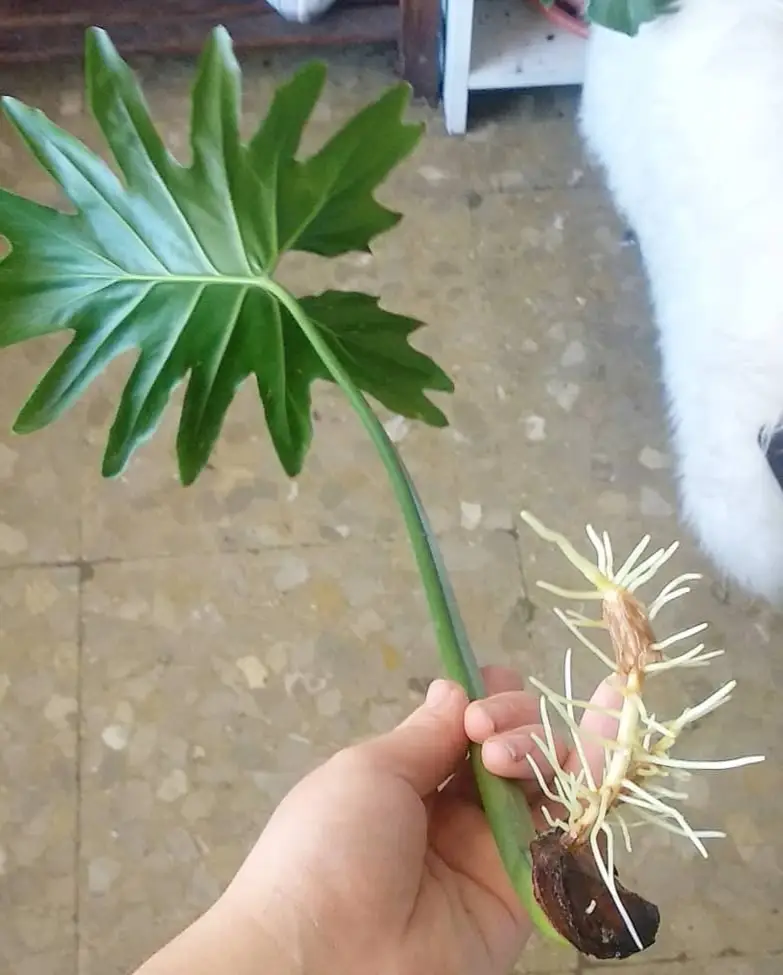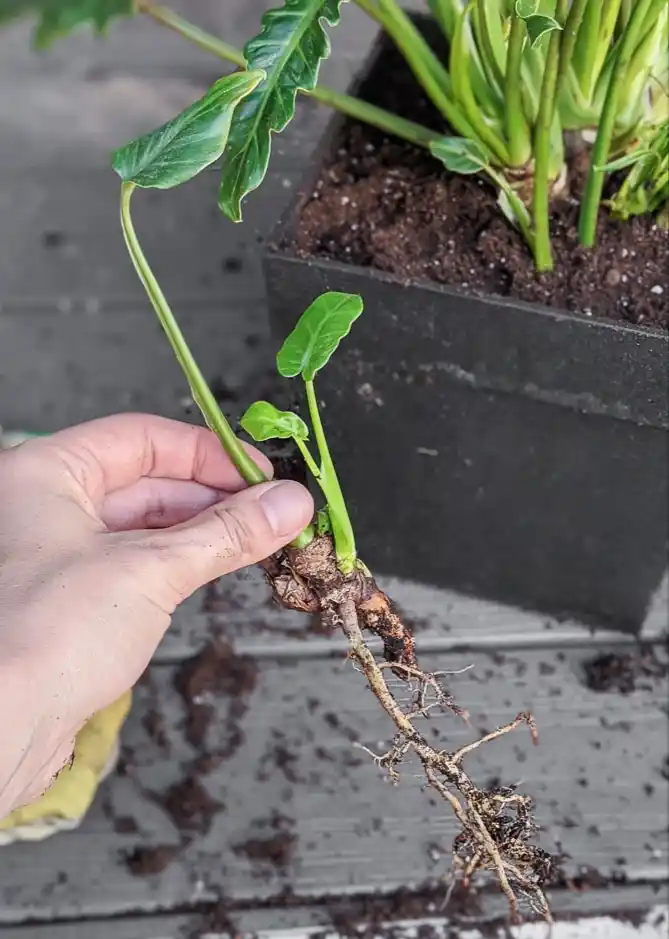These are the right ways of Philodendron Selloum Propagation (2 popular methods explained)
Have you ever tried any method of propagation of the Philodendron Selloum? If you have done this before, it can be surely said that you enjoyed doing this because of its ease.
You can easily propagate your selloum plant by root or stem cutting. You just have to cut the root or stem properly and plant them in another pot containing water or soil. The most important point is you have to keep a root with the cut stem. Propagation can also be done in the water.
For your help, this article contains the suitable timing, tools, and method of propagation of this beautiful plant in detail. Just scroll down to get your needs and enrich your garden with plants by using the correct propagation system.

Philodendron Selloum overview
The Philodendron Selloum plant is one of the best choices for your home gardening purpose. You may have some ideas about this plant from here-
| Scientific Name | Thaumatophyllum bipinnatifidum |
| Common name | Philodendron Selloum, Horsehead philodendron, lacy tree philodendron, etc. |
| origin | South America(Brazil, Bolivia, Argentina, and Paraguay) |
| Type of plant | Perennial |
| Suitable for | Tropical, Subtropical, and warm temperate region |
| Family | Araceae |
| Genus | Thaumatophyllum |
| Plant height | Around 5 feet |
| Leaf size | Length- 3 feetWidth- 12”-14” |
| Plant width | 10 feet |
| Leaf Color | Green |
| Flower | White-colored |
| Propagation | Root ball cutting or stem cutting |
How do I know if my selloum plant is ready to propagate?
You should have a clear concentration on your plant before propagating. You have to be sure that the plant is ready for propagation by observing some features mentioned below:
Healthy growth
A plant that shows vigorous growth is suitable for propagation. The new plant generally contains the exact qualities of the plant from which you will depart the stem or root.
Again, be sure that the selloum plant doesn’t have any disease or lack of nutrition by observing the fresh leaves and all-over condition of the plant.
Maturity
The plant from which you want to propagate must be matured. Now the question is how can you ensure suitable maturity?
You will get an idea of your selloum plant’s maturity from its height and leaf size. Besides, you will also find that the pot size of the plant is getting smaller than its necessity.
Rootbound
This may be considered one of the best indications for you. The roots will be so dense and clustered that there will be no space for root nourishment in the pot anymore.
Besides, the process of reaching water or fertilizer into the deep layer will be blocked. Then you can understand that the root bound has occured and now you can propagate your plant.
Tools required for propagation
The equipment that is needed to propagate the plant are mentioned here.
| Tools name | Usages |
| Sharp cutting tools | A sharp cutting tool like cutting scissors or a knife is must as a blunt knife can damage the plant while cutting. Again, they have to be disinfected to avoid any improper or damaged propagation systems. |
| Water pot | It is used in the water propagation method to do the rooting of the cuttings into the water. |
| New mixing/Soil pot | Mixing pot is needed in which the soil can be ready by mixing the suitable soil and fertilizer accordingly for propagation. The potting mix should be prepared earlier. |
| Watering can | Water can is used to keep watering the plants after a certain time to avoid the soil from drying out completely after the propagation method. |
| Hanging rope | is used to hang the plant if it is required for proper sunlight or if the homies want to decorate the house with the plants. |
| Disinfectant | Any suitable disinfectant should be arranged to disinfect the knife before and after cutting to avoid any fungal or bacterial infection during the propagation method. |
| Hand gloves | A pair of clean hand gloves should also be kept during the procedure to prevent any skin infection. |
Philodendron Selloum propagation
Among many methods of propagation, the two most common methods for propagating a philodendron selloum are-
- Stem cutting.
- Root ball division.
Both of these methods can be done with minimal effort. In this article, detailed information on how to propagate philodendron selloum will be found to decorate the garden. Let’s have a look.
Stem cutting propagation method
Stem cutting is the most popular method in all other methods of propagation. Again, this method can be done in two ways either in soil or in water.
Whatever the way, stem-cutting propagation can be done even by beginners just following a few steps. Let’s deep dive into the steps-
Step-1: Selecting a healthy stem: At first, the most important work is selecting a mature and healthy stem having at least two leaves. Keep in mind that the stem has to be free of any signs of infections or disease or pests.
Step-2: Making the clean cut: After selecting the healthy stem, another important step is to make a clean cut in one stroke by using a pair of sharp and disinfected pruning shears or a knife.
You should cut the stem about 1-2 inches below the leaf node where the leaf meets the stem. Make sure to sterilize your cutting tool before and after use to prevent any kind of infection.

Step-3: Prepare the cutting and choose the way: Then remove the lower leaves from the cutting, leaving at least two leaves at the top to focus its energy on the developing root.
- In case of propagation in soil, place the cut stem about 1-2 inches deep in a pot containing a well-draining, moist and peat-based potting mix.
In this step, you can also dip the cut end in a rooting hormone before planting for better growth, though this is not a must. Then keep the pot in a place having bright and indirect sunlight.

- In case of propagation in water, place the cut stem in a container filled with clean water and keep the container in a bright place avoiding direct sunlight.
Keep changing the water at least once a week to prevent bacterial growth. After 2 to 4 weeks, when roots will be approximately 2 inches long, transfer the cutting into the potting mix.

Step-4: Provide optimum conditions: Finally, you should keep in mind that the pot should be in a place having bright and indirect light. Beause direct sunlight causes sunburn or damages to the plant.
You should maintain humidity and consistent moisture in the potting mix and avoid overwatering. In about 4-6 weeks your cutting may develop roots and begin to grow new leaves.

Root ball division propagation method
Philodendron selloum plants’ roots always help to propagate in a vast amount. Why don’t you try this method also?
Dividing the root ball is another excellent method to propagate this plant that involves separating the plant parts carefully to create new individual plants. Let’s go through the detailed procedure below.
Step-1: Cleaning the roots: First, remove the plant from its pot carefully and wash the soil away gently around the roots with clean water. Otherwise, it may damage the root ball and cause hamper to the plant.
Besides, you have to remove the excess water from the roots. If excess water present on the roots, root ball may get rotten and propagation will be hampered.
Step-2: Identify the natural division: Then check and identify the natural divisions which usually occur at the base of the plant naturally and separate the plantlets accordingly.
You have to use a clean, disinfected and sharp knife or a pair of pruning shears to make a clean cut and avoid any fungal or bacterial infections.

Step-3: Observing the cut parts: Observe the cutting to be sure that each division contains an ample amount of roots and leaves after the cutting.
You should also assure that the divided part is free from any kind of pests or diseases or problems. Otherwise, the new plant will also get affected.

Step-4: Placing each cut parts: Lastly, place each divided root ball part into individual pots containing well-draining and peat-based soil. The soil must be moist but not soggy.
Moreover, the pot should be kept in a normal humid environment having a bright place and avoiding direct sunlight. Approximately after 3 to 4 weeks, the plant will start growing new leaves.

. .
Following any of these procedures, you can easily increase the number of philodendron selloum plants to enrich your home garden and also to gift the beautiful plant to your near and dear ones who love plants.

Frequently asked questions on Philodendron Selloum Propagation
Why do we need knowledge about this propagation system?
As different stages of propagation are considered perfect for different plants, you can’t use the same method for all plants. That’s why you should have the correct knowledge about the overall processes of propagation of this plant.
Again the cutting system, the potting system, and the tools are also not the same but are important factors. So, you have to identify the correct system, tools, and place for the propagation. The combined knowledge of these factors will ensure perfect propagation.
Which method is suitable and easy for philodendron selloum?
The method you want to use to propagate is completely your choice depending on your surroundings. You may have some hassle in the root bound system. Besides, stem cutting in water may be the easiest method for you.
Again, according to many reviews and most people, the most perfect way to propagate is by stem cutting in soil. So, here we have explained the two most common methods.
Hopefully, you have already studied all the methods of propagation. So now choose the most suitable and easier according to your surroundings and previous experiences.
Tips to care for the new plant after propagation
Whatever the propagation system is, you must abide by some rules for taking proper care of the new philodendron selloum plant.
- Philodendron selloum can’t tolerate scorching heat. So you have to keep it in such a place where it will get proper light but indirectly. Partial shade can also be useful for it.
- This plant prefers humid areas most. So, you have to ensure suitable humidity in the surroundings.
- Again, they can also die because of overwatering. So, watering should not be much frequent.
But keep in mind that your plant should not dry also. To maintain it, you should often check the soil if they get dried or not.
- Use dilute fertilizer for your plant to give great support as plants grow fast and well in it. Use it once a month when the plant is in a growing stage.
- Pest attacks like aphids, mealybugs, spider mites, etc. may cause harm to your plant. Besides, fungus, and bacterial blight which causes dark spots on leaves as well as leaves turning yellow of selloum etc. are severe problems of this plant.
A spray made of water and insecticidal soap or neem soap will be effective in this case.
Though naturally, these plants don’t require much care, you have to be concerned about some of these important factors to get the perfect growth and health of the plant.
Final Thought
Gradually, I reached the end of my details. Finally, we can see that the philodendron selloum is very easy to propagate. From the entire discussion, let’s recap what we get from this article.
- The philodendron selloum propagation system is undoubtedly a simple process as you need not gather much equipments.
- Besides, it can be done by following some very easy steps.
- Again your home garden or room corner can also be decorated by the small-sized plants of philodendron selloum.
- You don’t need to give much attention to maintenance. But a pretty look will be provided in your room by their green glace.
Understanding all the points, you just need to take little care and precautions with the plant to avoid damage, choose the best one for yourselves, and have a delightful journey with a Philodendron Selloum plant.






